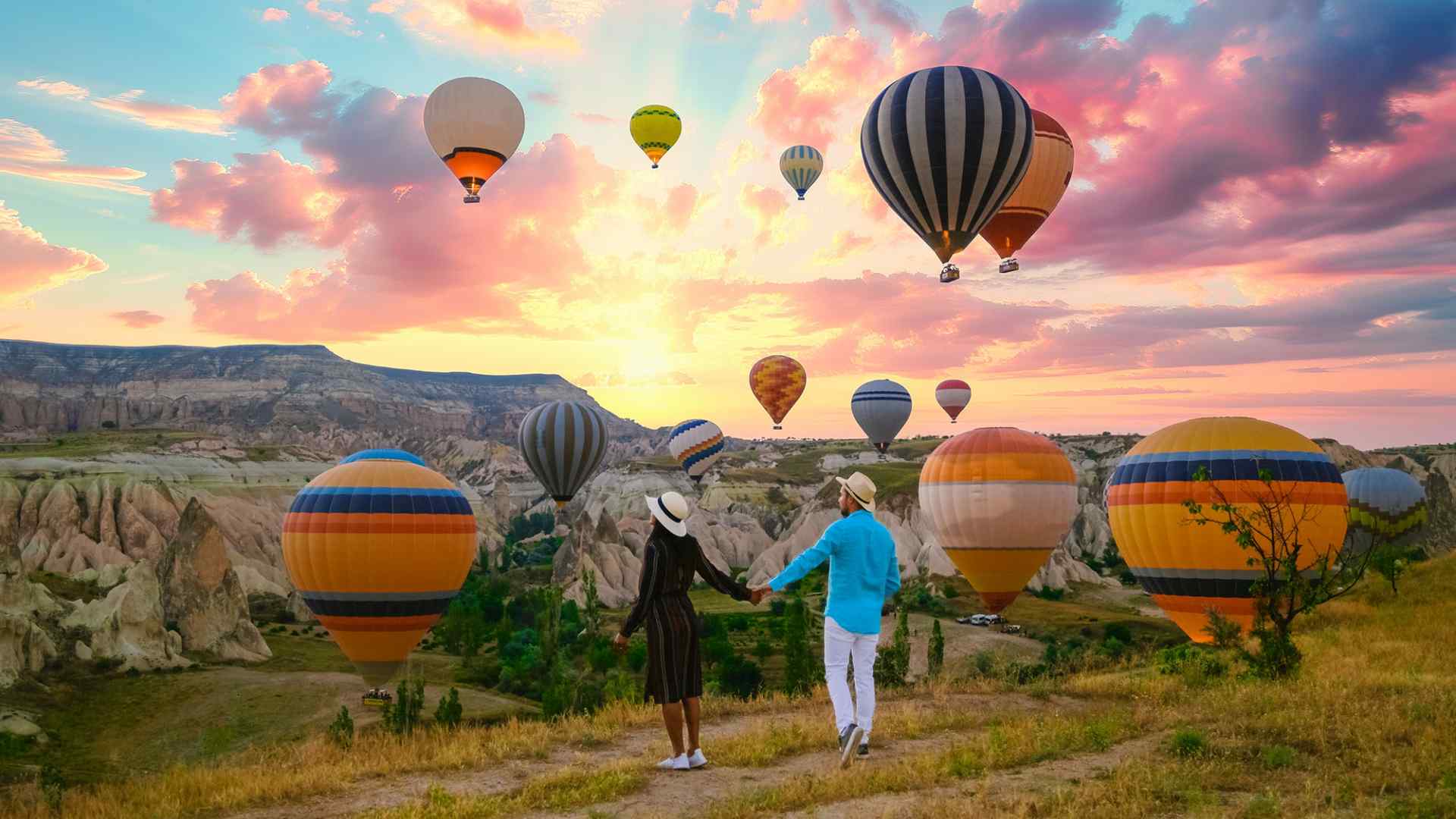Turkey
Your Ultimate Travel Guide
Book your individual trip, stress-free with local travel experts
Why Turkey?
Discover what makes Turkey unforgettable





Cappadocia’s surreal landscapes look like they’re straight out of a fantasy. Glide over the region in a hot air balloon at sunrise, admire the unique rock formations, and explore homes carved into the cliffs. Whether hiking through valleys or soaking in the view from above, this otherworldly destination feels truly magical.


Turkey’s coastline is a paradise of clear blue waters, ancient ruins, and charming seaside towns. Cruise on a traditional gulet, swim in hidden coves, or explore Lycian tombs along the way. Places like Antalya and Fethiye blend relaxation, adventure, and history, making the coast an unforgettable escape.


Explore Turkey’s rich history as the meeting point of East and West. Walk through the ancient streets of Ephesus, marvel at Hagia Sophia’s stunning domes in Istanbul, or visit the underground cities of Cappadocia. Each site reveals layers of history, from Roman ruins to Ottoman grandeur—a journey through time you’ll never forget.


Dive into Turkey’s vibrant cuisine, from sizzling kebabs to flaky baklava. Sip rich Turkish coffee in a bustling bazaar or indulge in a traditional meze spread overlooking the Bosphorus. Every bite tells a story of cultural fusion, blending flavors from Asia, Europe, and the Middle East into unforgettable dishes.

Travel tips
Plan with confidence
Unlock Turkey with local insights
Meet the experts who make your journey special

tourism
created
travellers

tourism
created
travellers

tourism
travellers

tourism
created
travellers

tourism
created
travellers

tourism
created
travellers
Turkey travel reviews
Rough Guides gets rave reviews
Trustpilot Rated 4.8/5.0Rough Guides helped me plan a wonderful 8 day trip through Turkiye. Our trip was a custom itinerary and Rough Guides and their expert Mehmet from Turkiye arranged all transportation, guides, admissions, and fabulous hotels in each city. Our itinerary required a lot of moving from place to place and included flights as well. We were picked up with almost military precision at each location that required a pickup. The vehicles were all clean, modern and the drivers were good. We never had a thought that we were not provided for. Our trip was everything we hoped for. I would definitely use Rough Guides again for any upcoming trips.
Considering all the moving parts to the trip with internal flights, pickups and drop offs to various hotels and airports and various tours, the trip went very well. Mehmet and his team responded very quickly when there was an issue(very few considering) and corrected it. I feel there was a good value to using Rough Guides and I would consider using your services again. We thoroughly enjoyed our visit to Turkey.
Best places in Turkey to visit
From icons to hidden treasures
























More travel inspiration
Discover Turkey's most captivating stories
Arrange your trip, hassle-free, with local travel experts
Arrange your trip with local travel experts